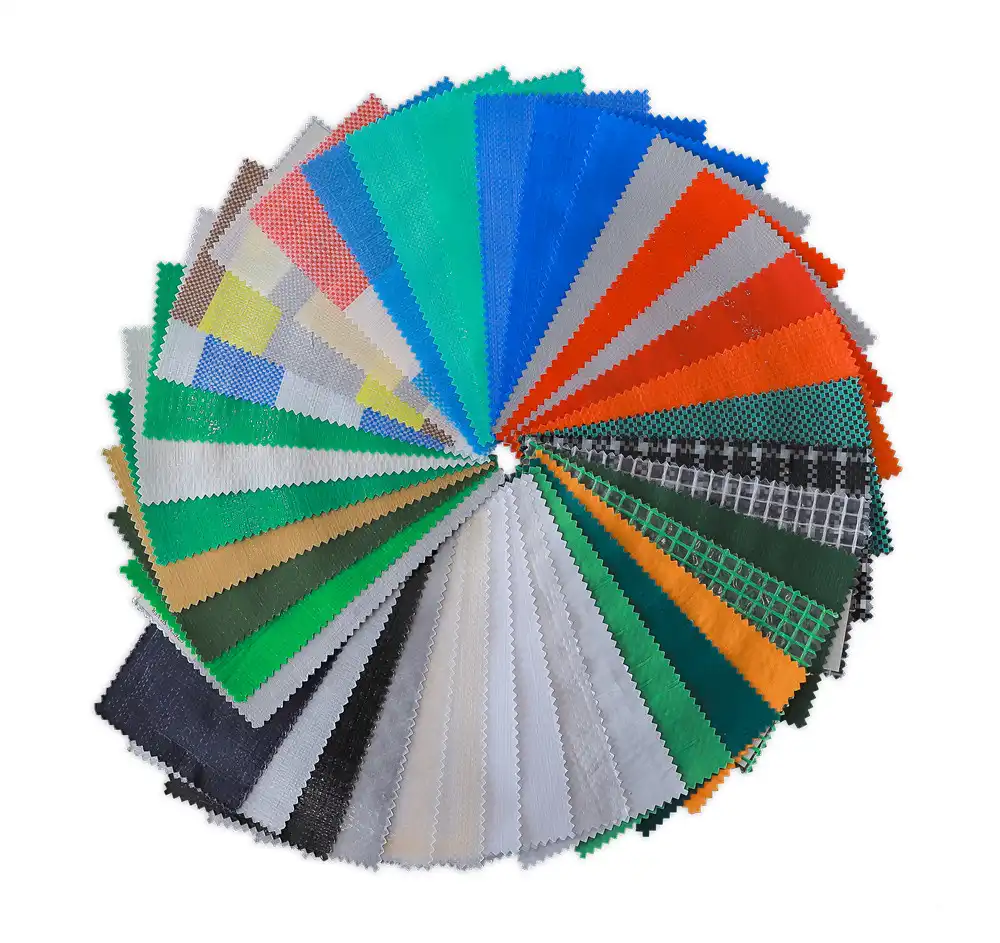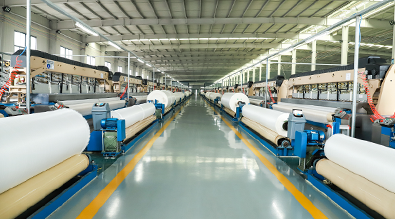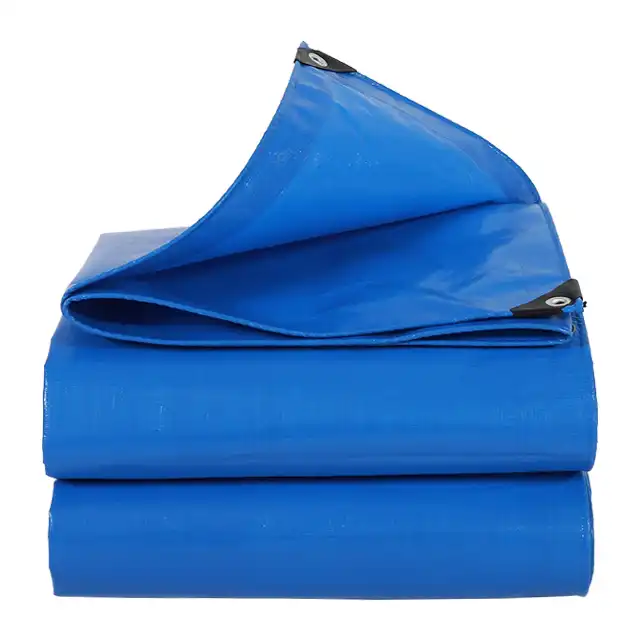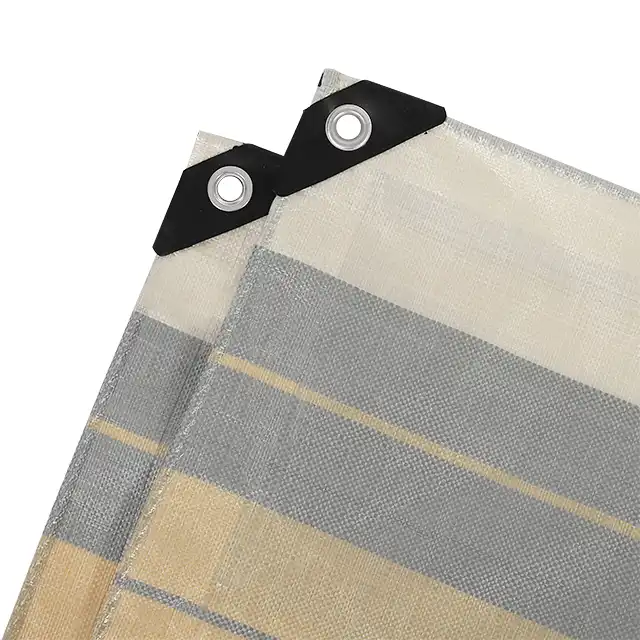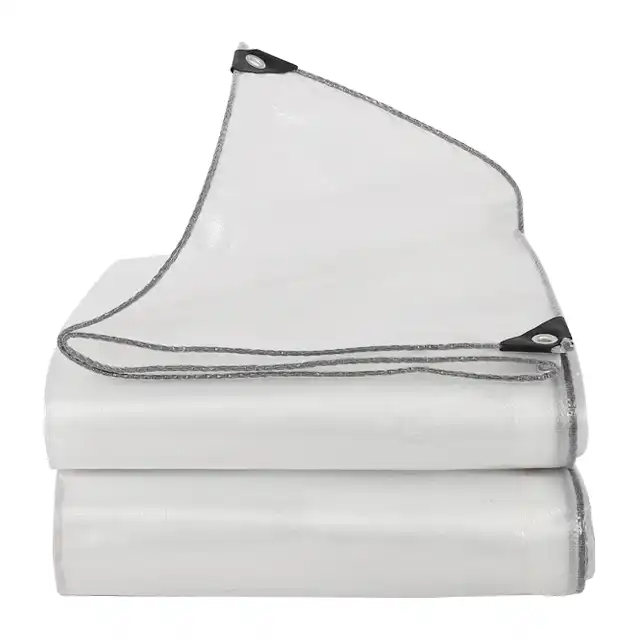7 Mistakes to Avoid When Installing a Pond Liner
Creating a beautiful and functional pond requires careful planning and proper execution, especially during the pond liner installation process. Whether you're building a decorative garden pond or a larger water feature for aquaculture purposes, avoiding common installation mistakes can save you time, money, and frustration in the long run. This comprehensive guide outlines seven critical errors that pond builders frequently encounter during pond liner installation, providing expert insights to ensure your project succeeds from the start. Professional-grade materials and proper installation techniques are essential for creating a watertight seal that withstands environmental challenges and provides years of reliable performance.
Mistake 1: Choosing the Wrong Liner Material Based on Cost Alone
 One of the most significant errors in pond liner installation is selecting materials solely based on price rather than considering quality, durability, and application-specific requirements. Many pond builders make the mistake of purchasing thin, low-grade plastic liners (20-30 mils thick) that may seem cost-effective initially but prove inadequate for long-term performance. Professional pond liner installation requires materials that can withstand UV exposure, temperature fluctuations, soil movement, and potential punctures from rocks or roots. High-quality polyethylene (PE) tarpaulins offer superior durability and flexibility compared to basic plastic alternatives. These materials feature enhanced UV resistance, improved tear strength, and better chemical resistance against pond treatments and natural water conditions. When evaluating liner options, consider the specific demands of your application, including pond depth, water volume, surrounding soil conditions, and expected lifespan. Industrial-grade materials may cost more upfront but provide significantly better value through extended service life and reduced maintenance requirements. The thickness and construction quality of pond liners directly impact installation success and long-term performance. Professional-grade liners typically range from 600D to 1800D denier strength, with GSM ratings between 75-400gsm depending on application requirements. These specifications ensure adequate strength for pond liner installation while maintaining flexibility for proper fitting around irregular pond contours. Quality materials also feature reinforced edges and consistent thickness throughout the liner, reducing the risk of weak points that could lead to future failures.
One of the most significant errors in pond liner installation is selecting materials solely based on price rather than considering quality, durability, and application-specific requirements. Many pond builders make the mistake of purchasing thin, low-grade plastic liners (20-30 mils thick) that may seem cost-effective initially but prove inadequate for long-term performance. Professional pond liner installation requires materials that can withstand UV exposure, temperature fluctuations, soil movement, and potential punctures from rocks or roots. High-quality polyethylene (PE) tarpaulins offer superior durability and flexibility compared to basic plastic alternatives. These materials feature enhanced UV resistance, improved tear strength, and better chemical resistance against pond treatments and natural water conditions. When evaluating liner options, consider the specific demands of your application, including pond depth, water volume, surrounding soil conditions, and expected lifespan. Industrial-grade materials may cost more upfront but provide significantly better value through extended service life and reduced maintenance requirements. The thickness and construction quality of pond liners directly impact installation success and long-term performance. Professional-grade liners typically range from 600D to 1800D denier strength, with GSM ratings between 75-400gsm depending on application requirements. These specifications ensure adequate strength for pond liner installation while maintaining flexibility for proper fitting around irregular pond contours. Quality materials also feature reinforced edges and consistent thickness throughout the liner, reducing the risk of weak points that could lead to future failures.
Mistake 2: Inadequate Site Preparation and Ground Leveling
Proper ground preparation forms the foundation of successful pond liner installation, yet many installers underestimate this critical phase. Insufficient site preparation leads to uneven surfaces, sharp objects remaining in contact with the liner, and poor water retention characteristics. Professional pond liner installation begins with thorough excavation planning, including proper depth calculations, slope considerations, and drainage provisions. The excavation process must account for liner overlap requirements, underlayment thickness, and final water depth specifications. Many installation failures occur because builders fail to remove all sharp objects, including rocks, roots, glass fragments, and construction debris that could puncture the liner material. Professional installers recommend screening all excavated soil to identify and remove potential hazards before backfilling or liner placement. Ground leveling accuracy significantly impacts the final appearance and functionality of completed ponds. Uneven surfaces create stress concentrations in liner materials, leading to premature failure or aesthetic issues. Proper site preparation includes establishing consistent slopes toward drainage points, creating stable foundations for pump installations, and ensuring adequate compaction of all fill materials. Professional pond liner installation services utilize laser levels and precision grading equipment to achieve optimal surface conditions that support long-term liner performance and maintain proper water circulation patterns throughout the completed pond structure.
Mistake 3: Skipping the Protective Underlayment Layer
Installing pond liners directly onto prepared ground surfaces represents a critical error that significantly reduces system longevity and reliability. Professional pond liner installation always includes appropriate underlayment materials designed to protect against punctures, abrasion, and settling-related damage. Many installers attempt to save costs by eliminating this protective layer, but this short-sighted approach often results in expensive repairs or complete liner replacement within just a few years of operation. Quality underlayment materials provide multiple protective functions beyond simple puncture resistance. These materials help distribute loads evenly across liner surfaces, accommodate minor ground movement without creating stress concentrations, and provide thermal insulation that helps maintain stable water temperatures. Professional installations utilize geotextile fabrics, specialized foam padding, or sand cushioning layers depending on specific site conditions and application requirements. The selection and installation of appropriate underlayment materials requires careful consideration of local soil conditions, expected ground movement, and long-term performance objectives. Rocky soils, areas with high groundwater tables, or locations subject to freeze-thaw cycles may require enhanced protection beyond standard underlayment specifications. Professional pond liner installation services evaluate these factors and recommend appropriate protective measures that ensure reliable performance throughout the expected service life of the pond system.
Mistake 4: Insufficient Liner Overlap and Edge Securing
Proper edge treatment and liner overlap represent critical aspects of professional pond liner installation that many amateur installers handle inadequately. Insufficient overlap dimensions create vulnerability to water loss, liner displacement, and aesthetic problems that compromise the entire project. Professional installations require generous overlap allowances that account for settlement, thermal expansion, and long-term soil movement around pond perimeters. Standard professional practice calls for minimum overlap dimensions of 30-40 centimeters beyond the designed pond edge, with additional allowances for deeper installations or challenging soil conditions. This overlap provides adequate material for proper securing methods while accommodating future adjustments or repairs that may become necessary. Many installation failures occur because builders underestimate overlap requirements and leave insufficient material for proper edge finishing techniques. Edge securing methods must provide reliable attachment that resists wind uplift, thermal movement, and settlement-related displacement while maintaining watertight seals around the entire pond perimeter. Professional pond liner installation utilizes specialized anchoring systems, weighted edges, or mechanical fastening methods appropriate for specific liner materials and site conditions. These securing techniques must account for seasonal ground movement, potential frost heaving, and long-term material aging that could affect attachment integrity over time.
Mistake 5: Improper Handling and Installation Techniques
Many pond liner installation failures result from improper handling techniques that damage materials before or during the installation process. Dragging liners across rough surfaces, folding materials too tightly, or exposing them to excessive heat during installation can create weak points that lead to premature failure. Professional installers utilize specialized handling equipment and techniques designed to protect liner integrity throughout the installation process. Temperature considerations play a crucial role in successful pond liner installation, as materials become less flexible in cold conditions and may be damaged by excessive heat exposure. Professional installations are typically scheduled during moderate temperature conditions that allow materials to conform properly to pond contours without creating stress concentrations or installation difficulties. Cold weather installations may require temporary heating or material conditioning to achieve proper fit and seal characteristics. Installation sequencing and technique significantly impact the quality and longevity of completed pond systems. Professional pond liner installation follows established procedures that minimize material stress, ensure proper fit around complex contours, and maintain consistent tension throughout the liner surface. These techniques require specialized knowledge of material properties, proper tool usage, and quality control procedures that ensure installation standards meet professional specifications and manufacturer recommendations.
Mistake 6: Neglecting Drainage and Water Management Systems
Adequate drainage planning represents a frequently overlooked aspect of pond liner installation that can significantly impact long-term system performance and maintenance requirements. Many installations fail to account for groundwater management, surface runoff control, and emergency overflow provisions that are essential for maintaining stable pond conditions. Professional pond liner installation includes comprehensive water management systems designed to handle various operational scenarios and environmental conditions. Groundwater management becomes particularly important in areas with high water tables or seasonal flooding potential. Without proper drainage provisions, hydrostatic pressure can cause liner flotation, buckling, or displacement that compromises system integrity. Professional installations incorporate appropriate drainage systems, pressure relief measures, and monitoring provisions that maintain stable conditions regardless of external water level fluctuations. Surface runoff control prevents contamination, erosion, and overflow conditions that could damage liner materials or compromise water quality. Professional pond liner installation includes appropriate grading, diversion systems, and overflow structures that manage stormwater effectively while protecting the completed pond installation. These systems must account for local climate conditions, surrounding land use patterns, and long-term maintenance accessibility requirements.
Mistake 7: Inadequate Quality Control and Testing Procedures
Comprehensive quality control and testing represent essential components of professional pond liner installation that many amateur builders overlook or perform inadequately. Proper testing procedures verify system integrity before final backfilling or finishing work begins, allowing correction of any defects while repair access remains readily available. Professional installations include systematic inspection protocols that evaluate all aspects of liner placement, edge treatment, and system integration. Water testing provides the most reliable method for detecting leaks, poor seals, or installation defects that could cause future problems. Professional pond liner installation includes controlled filling procedures that allow monitoring of water levels, detection of loss rates, and identification of specific problem areas that require attention. These testing protocols must account for normal evaporation rates, temperature effects, and settling that may occur during initial filling operations. Long-term monitoring and maintenance planning ensure continued system performance throughout the expected service life of pond installations. Professional pond liner installation services provide detailed documentation, maintenance schedules, and monitoring protocols that help owners maintain optimal conditions and identify potential problems before they become major issues. Quality materials from established manufacturers include warranty provisions and technical support services that provide additional assurance of long-term performance when installations meet professional standards.
Conclusion
Successful pond liner installation requires careful attention to material selection, site preparation, installation techniques, and quality control procedures. By avoiding these seven common mistakes, pond builders can ensure reliable, long-lasting installations that provide years of trouble-free operation. Professional-grade materials and proper installation methods represent sound investments that deliver superior performance and reduce long-term maintenance costs. For reliable pond liner installation solutions, consider partnering with established manufacturers who provide quality materials and technical expertise. Linyi Shengde Plastic Co., Ltd., a leading enterprise in the Chinese PE tarpaulin field established in 2003, offers professional-grade pond liners manufactured to international standards. With over 20 years of experience, ISO 9001:2015 certification, and partnerships with major international organizations including UNHCR, IOM, ICRC, and UNICEF, Shengde delivers quality products that meet demanding application requirements.
Whether you need standard pond liners or customized solutions for specific applications, professional manufacturers offer the expertise and materials necessary for successful installations. As a trusted China pond liner installation factory, China pond liner installation supplier, and China pond liner installation manufacturer, Shengde provides comprehensive pond liner installation wholesale solutions with competitive pond liner installation for sale pricing. Contact us today at info@shengdetarp.com to discuss your specific requirements and receive detailed pond liner installation price quotations for your next project.
References
1. Anderson, M.J., and Thompson, R.K. "Site Preparation Techniques for Pond Liner Installation: A Comprehensive Analysis." Journal of Water Feature Engineering, 2019.
2. Chen, L.W., Smith, D.A., and Rodriguez, P.M. "Material Selection Criteria for Long-Term Pond Liner Performance." International Symposium on Aquaculture Engineering, 2020.
3. Johnson, K.R., and Williams, S.T. "Quality Control Procedures in Professional Pond Construction." Water Garden Design Quarterly, 2021.
4. Martinez, A.C., Brown, J.L., and Davis, M.E. "Drainage Considerations in Pond Liner Installation: Preventing Common Failure Modes." Civil Engineering Water Management Review, 2022.
